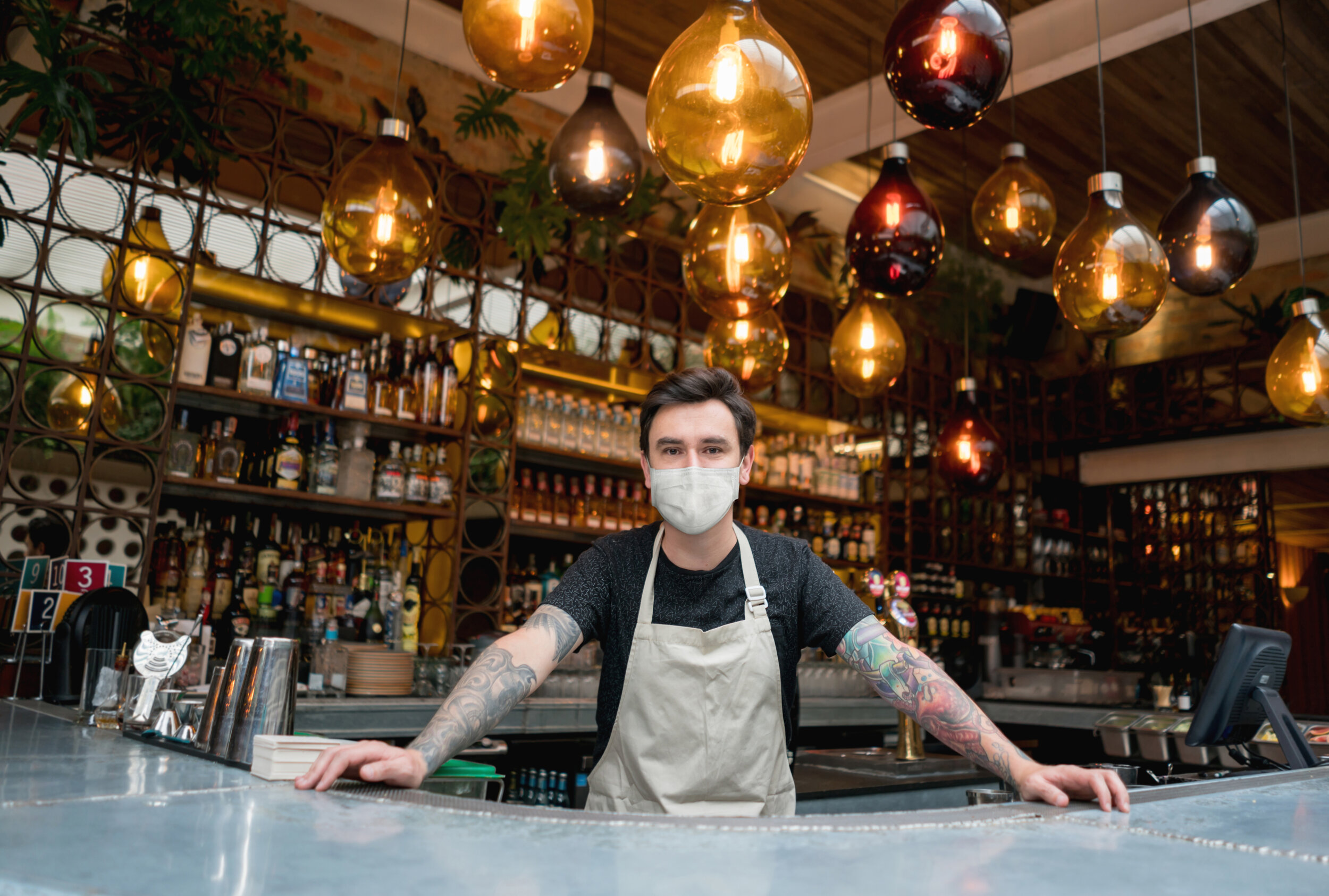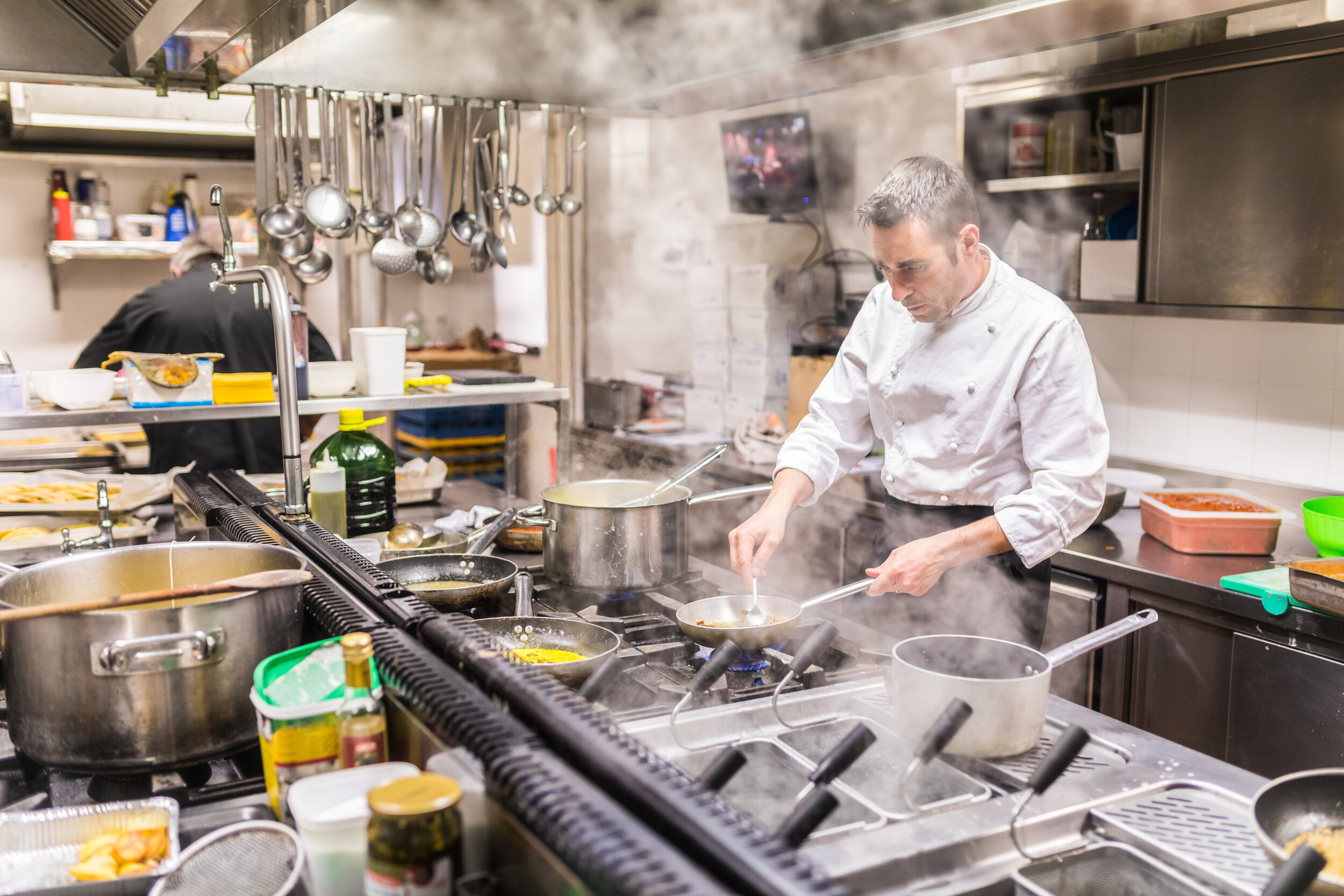I have a soft spot for restaurants. Working in restaurants took me from my first job as a teenager to buying my first car and paying for college. Now, as an architect, restaurants are a source of business and one of my favorite industry groups to work with. So, when I talk about restaurants, it’s personal.
It’s been heartbreaking to see an industry I care so much about being hammered by the COVID-19 crisis. “Building to give back” is my business motto, and this industry is one that I particularly want to give back to. So this summer, my team and I decided to create an Outdoor Design Strategies plan for the Village of Sewickley. It was one small step I could take to help the restaurants in our local community.
Looking to the future, I realize that our plan is only going to help for as long as the weather holds. In the same way, this year’s economic stimulus packages and SBA loans offer time-limited effectiveness, leading industry pundits to predict doom and gloom. However, there are good reasons to be hopeful, and they come in the form of creative pivots. These unconventional responses to challenging circumstances can make all the difference to sustaining a restaurant business.
Where Do We Go from Here?
The unexpected reality check of the last 6 months has revealed that the old model of the restaurant business cannot work in a pandemic. And - if it is true that our habits will be forever changed by what we are going through now - it may not work again, ever. As many restaurants have discovered, a payroll loan covering a few weeks or months cannot offset long-term lost revenue, worsened labor shortages, and a disappearing market. Even restaurants that have survived are facing lowered capacity and a nail-bitingly uncertain future.
Still, there are a few restaurants who are thriving right now. They are the restaurants that have chosen to see opportunity in drastic change and have creatively adjusted their business strategies to make those changes work. It can take different forms: whether it’s a popular regional Pittsburgh sandwich shop like Primanti’s, using well-timed email promotions to capitalize on cook-at-home fatigue, or chef Daniel Humm of Eleven Madison Park, who adopted artist Willem de Kooning’s mantra, “I have to change to stay the same,” and shuttered his fine dining establishment to feed front-line workers in New York City by partnering with corporate donors and nonprofits.
Two weeks ago, The New York Times published this article featuring a variety of ways to re-think the economic and business model of restaurants, with an emphasis on shared responsibility and a worker-centered approach. But what if we looked beyond economics and food, to the bigger role that restaurants could play in supporting and sustaining human health for every individual who spends time in their restaurant environment? This means reinventing the entire cooking-dining-visiting experience to one that actively considers and promotes holistic human health from an environmental standpoint.
This is a category of creative pivot that offers real hope for a very different future. It starts with something now familiar, food-focused sustainability, and takes it further to encompass the restaurant’s entire indoor environment and its impact on human health and well-being. It goes far beyond sustainable food practices.
In today’s world, we spend 90% of our time indoors. The combination of light, air, temperature, humidity, and sound in which we envelop our bodies creates a cumulative effect on our physical and mental health. Taken together, nothing impacts our health more.
As an architect, I spend a lot of time thinking about buildings, and our concept of buildings as shelter. The more I learn and practice high-performance building design, the more I realize that we as a society are missing one of the most important technological capabilities that is right in front of us. With the advent of building science, sophisticated sensors, and cloud-based analytics, our buildings now have the capability to take care of us. We no longer need to look at building maintenance as an operational cost center. Now we can see it, use it, and leverage ROI on it, as an asset.
The Business Case for High-Performing Restaurants
Restaurant owners may initially be resistant to what they perceive as the prohibitive costs of new technology required to make a building “high performing.” While it is true that some of the technology involves additional expense, the expense is incremental. The foundational systems are already built in to every restaurant project budget. Upgraded ventilation, filtration, sensors and monitoring technology can be added with only fractional cost increases while maximizing building performance gains. And the increased public attention to air quality and restaurant spaces may open up channels of funding that have not existed before, whether through government, NGO’s, or even engaged customers.
Decades of data have proven that human performance, health, and perceived sense of wellbeing all increase with better-ventilated indoor spaces. Poor ventilation has been associated with increased absences and higher instances of asthmas and respiratory infection, as well as fatigue, irritation, and headache.[i] In the food service sector, indoor pollutants from cooking on commercial stoves (PM, VOC’s, polycyclic aromatic hydrocarbons) have been linked to kidney inflammation.[ii]
Compounding air quality factors, restaurants face noise as a critical environmental factor. Excessive noise has repeatedly been cited as the top complaint in restaurants[iii], and something known as the Lombard Effect explains why: people unconsciously raise their voices to be heard in loud surroundings, which compounds the noise already affecting a crowded space. Research shows that loud, chaotic environments decrease people’s ability to taste and enjoy their food.
Loud dining environments can actually depress a person’s ability to taste salt and sweetness, and lessen sensitivity and perception of crunchiness.[iv] Overall, people’s reactions to background noise parallel their reactions to food: if they dislike the background noise, they tend to dislike the food, and vice versa. Taken together, environmental factors like air quality, noise, temperature, and light are the most common reasons that customers choose never to return to a restaurant.[v]
The bottom line is that any investment a restaurant makes to improve indoor environmental factors like temperature, air quality, and acoustics will reap a research-backed return on that investment in the form of better customer opinions, repeat business, and healthier and safer employees.
What the Future Could Look Like
Already, some of the world’s most forward-thinking organizations like the International Well Building Institute and RESET are now piloting restaurant-specific programs to expand the reach of their standards beyond the traditional early-adopter building types such as office buildings and schools.
Just last month, our Sewickley Tavern project officially became the world’s first RESET-certified restaurant, achieving the highest international standard for indoor air quality. Why is it the first? We were able to achieve this milestone because the right combination of elements came together: a sustainability-minded owner who prioritized human health and well-being combined with the firm’s High Performance Program which made the technology decisions simple. Together, we are showing the world how very attainable a high-performing restaurant building can be. All it took was commitment, information, and action. Now, the Tavern provides the best air-quality any restaurant can offer, along with an energy-efficient, comfortable, and acoustically-sensitive environment. They have created a unique competitive advantage for a post-pandemic market.
As a high-performance building, Sewickley Tavern supports its employees - who spend the most time in the restaurant - with improved concentration and focus, lower blood pressure, and improved respiratory health.[vi] In turn, those healthier employees deliver increased productivity, lowered absenteeism, and better service, which improves the customer experience and increases likelihood to return. Most transformative of all, the Tavern helps the whole community by providing a quiet, toxin-free, restorative environment that benefits all who work, visit, and dine there.
Any forward-thinking restaurant would do well to explore similar strategies to position their business for success in the future. Even after the pandemic ends, concerns about air-quality will run high. Restaurant workers and immuno-compromised individuals will always be at increased risk for respiratory problems. Diners will be more aware and informed about the air they breathe and the aerosols it contains.
Someday in the not-too-distant future, the technology that measures and ranks air quality and other environmental data points will be need-to-have, not just nice-to-have, for every business. Awareness is growing and it is just matter of time until the surge of demand hits. And then, healthy indoor environments will be a baseline expectation of every customer who walks in the door.
The restaurants which embrace the creative pivot and start now, even in small ways, will be the ones positioned for success when that day comes. They can get themselves smart with resources like the High Performance Program. They can consider applying for loan or grant money to start making improvements to their environmental systems. They can engage their customers in the conversation. Most importantly, they can use drastic change as a catalyst for dramatic growth.
And Henry Hitchings writes in The Economist’s recent essay on why people go to restaurants, “The restaurant remains a symbol of freedom. It enshrines the idea of choice – the existence of choice, that is, and our capacity to make choices.” For restaurant owners, making the choice to build a business that sustains human health and wellness is not just the right thing to do, it is a competitive advantage, a talent attractor, and a smart investment in the future health of their own business.
[i] World Health Organization 2009; and Allen, Joseph G., Piers MacNaughton, Usha Satish, Suresh Santanam, Jose Vallarino, and John D. Spengler. “Associations of Cognitive Function Scores with Carbon Dioxide, Ventilation, and Volatile Organic Compound Exposures in Office Workers: A Controlled Exposure Study of Green and Conventional Office Environments.” Environ Health Perspect 124, no. 6 (2015).
[ii] Singh, Amarnath, Ritul Kamal, Mohana Krishna Reddy Mudiam, Manoj Kumar Gupta, Gubbala Naga Venkata Satyanarayana, Vipin Bihari, Nishi Shukla, Altaf Hussain Khan, and Chandrasekharan Nair Kesavachandran. “Heat and PAHs Emissions in Indoor Kitchen Air and Its Impact on Kidney Dysfunctions Among Kitchen Workers in Lucknow, North India.” Edited by Zhanjun Jia. PLOS ONE 11, no. 2 (February 12, 2016): e0148641. doi:10.1371/journal.pone.0148641.
[iii] Consumer Reports, “Top Restaurant Complaints and Worst Offenders,” https://www.consumerreports.org/restaurants/top-restaurant-complaints-and-worst-offenders/ September 20, 2016. Zagat, “2018 Dining Trends Survey: Highest Tippers, Social Media Habits and More,” https://www.zagat.com/b/2018-dining-trends-survey-highest-tippers-social-media-habits-and-more.
[iv] A.T. Woods, E. Poliakoff, D.M. Lloyd, J. Kuenzel, R. Hodson, H. Gonda, J. Batchelor, G.B. Dijksterhuis, A. Thomas, “Effect of background noise on food perception,” Food Quality and Preference, https://doi.org/10.1016/j.foodqual.2010.07.003.
[v] “A Look at the Relationship between Service Failures, Guest Satisfaction, and Repeat-Patronage Intentions of Casual Dining Guests”, Alex Susskind and Anthony Viccari, Cornell Hospitality Quarterly 52(4) 438–444.
[vi] Allen, J., MacNaughton, P., Laurent, J. G. C., Flanigan, S. S., Eitland, E. S., & Spengler, J. D. (2015). Green Buildings and Health. Current Environmental Health Reports, 2(3), 250-258. doi: 10.1007/s40572-015-0063-y and Daisey, J. M., W. J. Angell, and M. G. Apte. “Indoor Air Quality, Ventilation and Health Symptoms in Schools: An Analysis of Existing Information.” Indoor Air 13, no. 1 (March 2003): 53–64. doi:10.1034/j.1600-0668.2003.00153.x.




